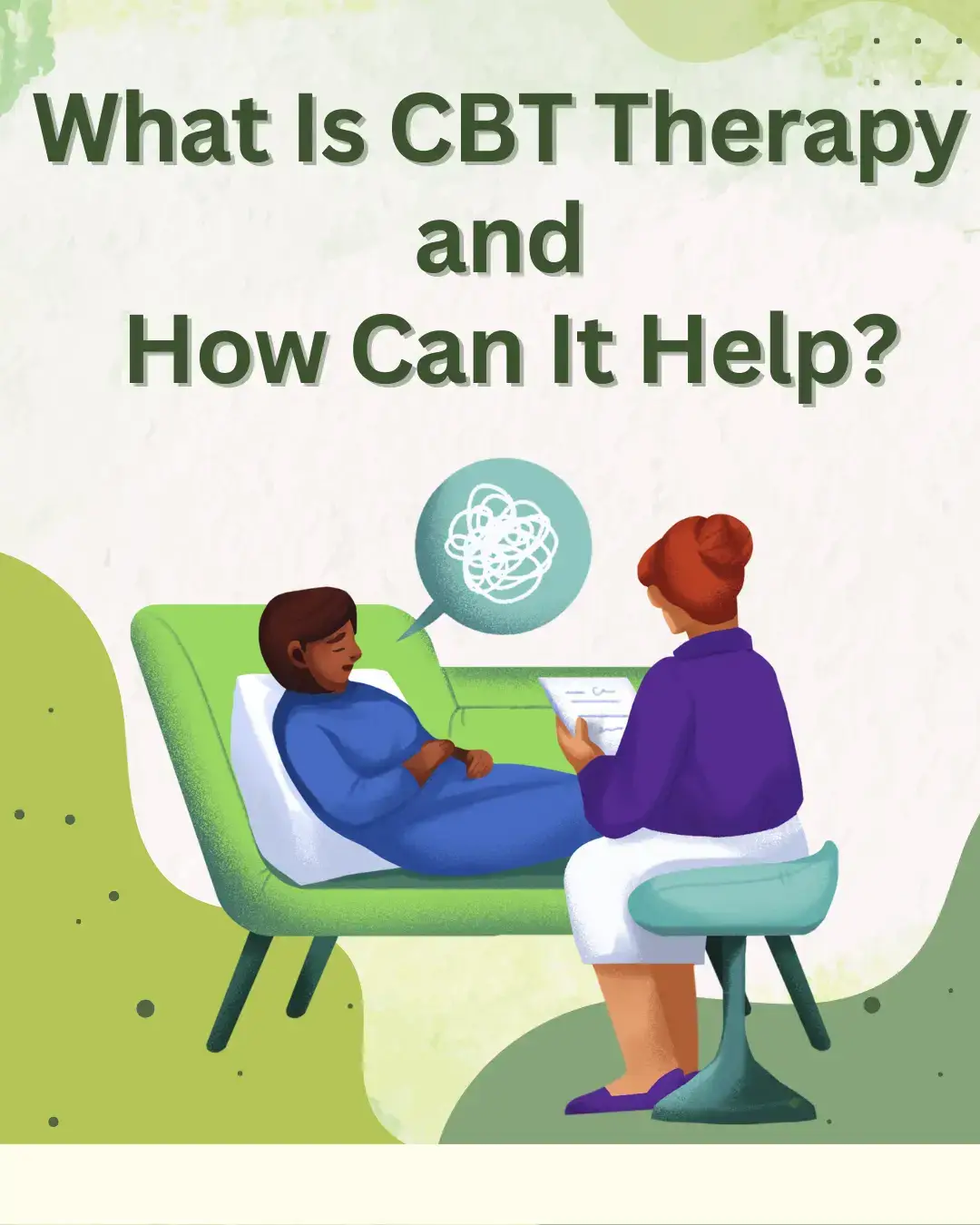What Is CBT Therapy and How Can It Help?
If you’re struggling with negative behaviors from your past, CBT therapy (Cognitive Behavioral Therapy) might help. This therapy helps you identify and change harmful patterns. It’s beneficial for various mental health conditions. In this article, you will learn how CBT works, its advantages, and how it can help.

What Is Cognitive Behavioral Therapy (CBT)?
Cognitive Behavioral Therapy (CBT) is a form of therapy that seeks to address different concerns such as depression, anxiety, substance use, marriage difficulties, eating disorders, and severe mental disorders. Comparative studies have also found that CBT can notably enhance functionality and the overall well-being of an individual. CBT is as effective or sometimes more effective as other forms of therapy or pharmacological treatments in several instances.
Why Is CBT Effective?
CBT has been proven to be effective because it is founded on both research and practice. The success of the methods utilized in CBT is firmly grounded in scientific evidence of the changes that the therapy creates. This means that CBT is different from many other kinds of psychological interventions.
What Are the Techniques Used in Cognitive Behavioral Therapy (CBT)?
Cognitive Behavioral Therapy (CBT) is more than just identifying thought patterns. It uses different strategies to help people overcome these patterns. These are some approaches commonly practiced in CBT:
Noticing Negative Cognitive Patterns
An important component of CBT is identifying the thoughts, feelings, and situations that trigger the maladaptive behaviors. This can be challenging, particularly for individuals who experience difficulties in introspection. However, it is crucial to recognize such thoughts for personal development and assist in the processes of treatment.
Learning New Techniques
In CBT, individuals usually acquire new coping mechanisms in order to employ them in the real world. For instance, a person with substance use disorder may engage in new behaviors to avoid substance use again and also discover how to deal with situations that may compel him to turn to substances.
Establishing Objectives
It is important to establish goals in order to enhance the quality of life. In CBT, therapists assist people to identify and accomplish goals. This involves learning how to:
- Identify goals
- Distinguish between short-term and long-term goals
- Create SMART objectives (specific, measurable, attainable, relevant, and time-oriented)
Focusing on the process of setting goals is as important as achieving them.
Addressing Challenges
CBT helps them learn different ways to approach, solve, or manage the various problems in life. They can minimize the impact of stress and disease. The problem-solving process in CBT includes:
- Identifying the problem
- Creating a list of possible solutions
- Thinking about the good and bad sides of each idea
- Choosing the best solution
- Implementing the chosen solution
Keeping Track of Personal Development
Another key CBT strategy is a self-monitoring technique also known as diary work. It involves monitoring and reporting certain behaviors, signs, or events to a therapist. This can help the therapist in delivering proper treatment to the affected persons. For instance, a girl with an eating disorder may use a diary to record her eating habits, thoughts, and the feelings she experiences.
Using these CBT techniques, people can be able to change their thinking and behavioral patterns and thus be able to lead a healthy life.
Challenges in Cognitive Behavioral Therapy
- Difficulty Changing Thought Patterns: Cognitive restructuring often proves to be difficult for many persons, even when they are fully aware of the fact that they have negative or irrational thoughts.
- Structured Approach of CBT: Compared to other therapies, CBT is more structured and organized and does not blend as seamlessly with some other approaches such as talk therapy. That’s why this kind of structured format may not be appropriate for all people especially those who may prefer a relatively more liberal kind of treatment.
Requirements for Success in CBT
- Readiness for Personal Exploration: In this approach, clients must be willing to spend a lot of time and effort in identifying and analyzing their own cognition and feelings.
- Gradual Steps Toward Change: CBT is based on the gradual modification of behavior under the goals set. For example, if a person has an issue controlling anger, they might begin by noting the signs that make them lose their temper and then work their way up to learning how to calm down before reacting.
How Can I Find a CBT Therapist?
- When searching for a CBT therapist, one may have to look at psychologists, psychiatrists who have prescription authority, psychiatric nurses, social workers, or family therapists.
- Finding the right therapist might require some time. But, don’t get discouraged. You can ask your primary healthcare provider or your friends or family members for recommendations.
- You can also search online through local and state psychological associations and organizations. However, before choosing any therapist, ensure that they are licensed and that they deal with your condition of choice, for instance, depression or anxiety.
- Look for the diseases treated by several therapists and inquire from their offices before making your decision.

